AI chatbots are everywhere these days.
Two of the most popular ones are Claude and ChatGPT. Both are powerful. Both are smart. And both will leave you questioning if you still need a brain of your own.
While ChatGPT doesn’t need an introduction, many are still unaware of Claude.
In this guide, we’ll go beyond simple introduction of these two AIs. We’ll go deep.
This Claude vs GPT 4 comparison will cover the following:
- An overview of Claude and ChatGPT
- Key features of both platforms
- Ideal use cases for each AI
- Strengths and weaknesses worth knowing
- Pricing plans
So, let’s start.
Claude AI Overview
Claude is a family of large language models created by Anthropic, with the first release arriving in March 2023.
Anthropic positioned Claude as an intentional response to some of the observed weaknesses in early AI systems, especially regarding safety and alignment.
The core mission behind Claude’s development centered around predictability, ethical behavior, and trust.
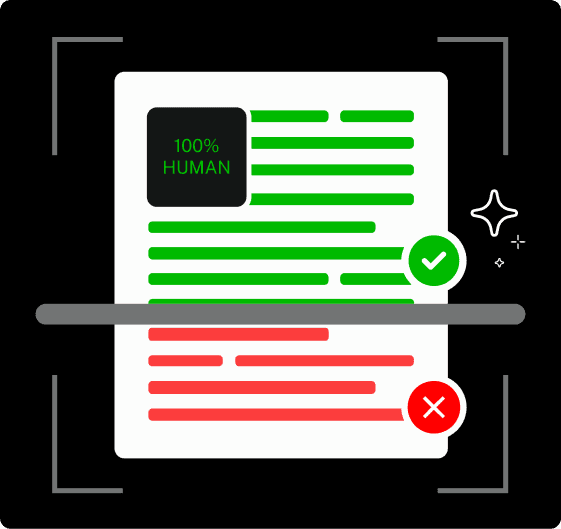
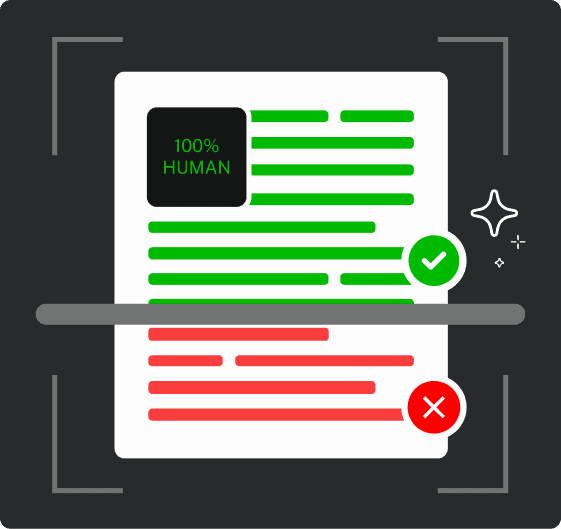
Never Worry About AI Detecting Your Texts Again. Undetectable AI Can Help You:
- Make your AI assisted writing appear human-like.
- Bypass all major AI detection tools with just one click.
- Use AI safely and confidently in school and work.
Rather than simply maximizing performance at all costs, Claude prioritizes user safety and clarity which makes it one of the more cautious and user-centered AI models currently available.
From the start, Claude demonstrated a strong ability to handle general tasks like conversation, summarization, and content generation.
There are several models within the Claude family, such as Claude 3 Opus and Claude 3.5 Sonnet and now Claude 3.7 Sonnet.
ChatGPT Overview
ChatGPT, developed by OpenAI, launched publicly in late 2022 and quickly became synonymous with the broader idea of AI for many people.
It was the first conversational AI model to gain mass popularity.
ChatGPT is the customer-facing application that allows users to interact directly with OpenAI’s family of large language models.
Over time, OpenAI expanded the ChatGPT ecosystem by offering different versions like GPT-3.5, GPT-4, and now GPT-4.1.
This variety gives users freedom to choose, but also introduces some complexity regarding which model is handling a given task.
As of April 2025, ChatGPT’s website ranks among the top 10 most visited sites on the entire internet.
Claude vs ChatGPT: Key Feature Comparison
Both platforms have gone through major upgrades since their original launches, and while we’ve covered their general evolution already, it’s time to zoom in and assess their features.
Models
First, let’s talk about ChatGPT models.
As per ChatGPT’s Wikipedia page (as of April 27th, 2025), ChatGPT’s previous and current models include:
| Model | Release date | Status |
| GPT-3.5 | November 2022 | Discontinued |
| GPT-3.5 Turbo | 2023 | Discontinued |
| GPT-4 | March 2023 | Active |
| GPT-4o | May 2024 | Active |
| GPT-4o mini | July 2024 | Active |
| o1-preview | September 2024 | Discontinued |
| o1-mini | September 2024 | Discontinued |
| o1 | December 2024 | Discontinued |
| o1 pro mode | December 2024 | Discontinued |
| o3-mini | January 2025 | Discontinued |
| o3-mini-high | January 2025 | Discontinued |
| GPT-4.5 | February 2025 | Active |
| o3 | April 2025 | Active |
| o4-mini | April 2025 | Active |
Here are ChatGPT models from GPT 4 onwards.
GPT-4
Released on March 14, 2023, GPT-4 was a major leap forward from GPT-3.5. It brought better reasoning, stronger language skills, and an expanded ability to handle complex instructions.
That said, some of the same old problems like hallucinations and inconsistency stuck around.
OpenAI kept the technical specs close to the chest, but GPT-4 introduced impressive features like image and video input abilities, although most of that remained unavailable to regular users.
GPT-4 Turbo
Turbo charged ahead later in 2023 with a much larger context window to enable bigger conversations and deeper prompts.
It didn’t necessarily make the model smarter, but it definitely made it more patient and more able to keep track of longer, messier threads without hallucinating.
GPT-4o
The “o” stands for “Omni,” and in May 2024, GPT-4o made a lot of noise for being faster, cheaper, and just straight-up more capable.
Not only could it handle text and images, but sound too.
It doubled the speed compared to Turbo and cut the cost in half, offering all of this to free users (within reason).
For paid subscribers, the usage cap was even higher.
GPT-4o Mini
When OpenAI dropped GPT-4o Mini in July 2024, it effectively booted GPT-3.5 Turbo out of the lineup.
Mini brought decent capabilities at lighter computational costs, basically becoming the model for everyday tasks.
GPT-4.5
In February 2025, GPT-4.5 rolled out and was described as a “giant, expensive model.” This update reduced hallucinations, improved creativity, and gave users better pattern recognition.
Essentially, it added polish where GPT-4 had already laid the groundwork.
Now let’s shift to Claude 3 models.
Claude 3
Claude 3 landed in March 2024 with three models: Haiku, Sonnet, and Opus. Haiku was built for speed, Sonnet for a balanced approach, and Opus for deep reasoning and cognitive work.
Claude 3 Opus really stood out for excelling in areas like math, programming, and logical analysis, showing that Anthropic was serious about upping their technical game.
Claude 3.5
Claude 3.5 Sonnet, released in June 2024, raised the stakes further by outperforming even Claude 3 Opus on benchmarks involving coding, image interpretation, and text analysis.
The release also introduced Artifacts, which allows users to preview real-time outputs like SVG graphics and websites directly in the chat interface.
Claude 3.5 (New)
An upgraded Claude 3.5 Sonnet was introduced in October 2024 alongside Claude 3.5 Haiku.
The star of the show here was “computer use,” a beta feature where Claude could actually navigate a desktop environment—clicking, typing, moving the cursor.
It pushed Claude past just answering questions into actually doing tasks on a system like a semi-autonomous assistant or AI agent.
Claude 3.7
Released in February 2025, Claude 3.7 Sonnet merged rapid-fire response speed with more deliberate, step-by-step reasoning, letting users control how much “thinking time” Claude took depending on the situation.
It removed the need to toggle between “fast” and “smart” models by fusing both into one dynamic system.
Anthropic also previewed Claude Code, a terminal-based agentic coding tool that gives developers a new way to offload complex scripting jobs directly from their command line.
Here’s a quick table comparing Claude vs ChatGPT 4 models.
| ChatGPT 4 Models | ||
| Model | Key Strengths | Release Date |
| GPT-4 | Reasoning upgrade, multimodal (limited) | March 2023 |
| GPT-4 Turbo | Bigger context, faster access | November 2023 |
| GPT-4o | Multimodal (text, image, sound), faster, and cheaper | May 2024 |
| GPT-4o Mini | Lightweight version for everyday tasks | July 2024 |
| GPT-4.5 | Reduced hallucination, better creativity | February 2025 |
| Claude 3 Models | ||
| Claude 3 | Haiku (speed), Sonnet (balance), Opus (complex tasks) | March 2024 |
| Claude 3.5 | Superior code handling, Artifacts feature | June 2024 |
| Claude 3.5 (New) | Computer interaction (beta) | October 2024 |
| Claude 3.7 | Hybrid reasoning model, Claude Code tool | February 2025 |
Context Window
Context window indicates how much the AI can “remember” during a single conversation or input session.
It’s about what it can hold in its “working memory” during a chat, from both prompts and responses, before it starts hallucinating.
Content window is a real advantage when you’re doing heavy research, running multi-stage projects, or trying to keep a deeply technical conversation coherent over a long period.
Here’s a diagram by Claude illustrating the concept of the context window.
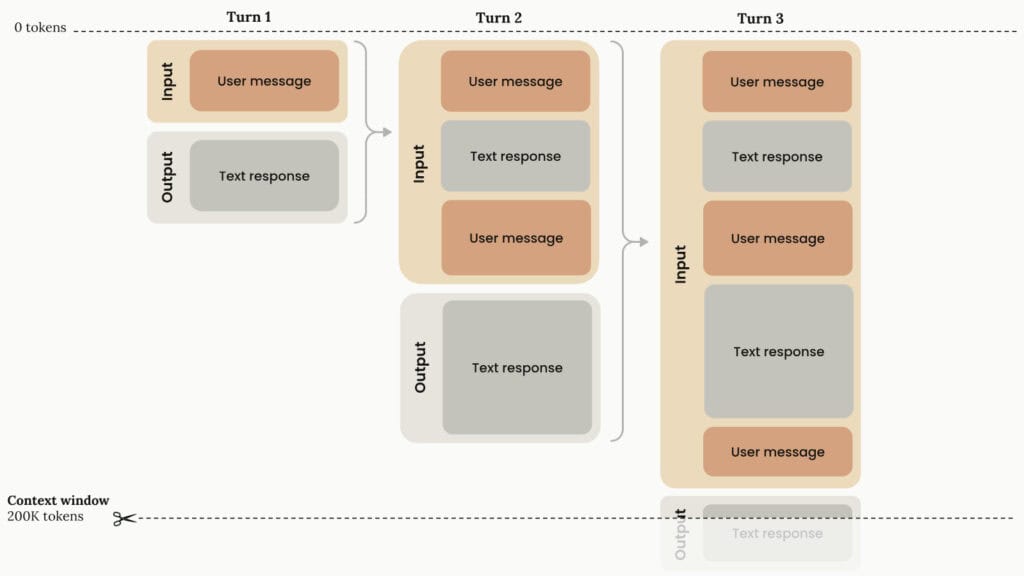
GPT-4o, OpenAI’s current flagship, offers a respectable 128,000-token context window with 16,384 max output tokens.
That’s good enough for maybe 250-ish pages of text. GPT-4.1 (still in limited rollout) blows that number up to over one million tokens (1,047,576).
Claude, meanwhile, has been playing at a different level. Claude 3 Opus rolled out with a 200,000-token window, and Claude.ai users on paid plans can shove in even larger files comfortably.
With enterprise accounts, Claude Sonnet 3.7 stretches things to a whopping 500,000 tokens. That’s not just more room to think; that’s more room to reason, remember, and respond coherently across insanely long inputs.
Projects Feature
Both ChatGPT and Claude realized at some point that there needs to be a Projects feature to bring some order to the chaos for people using AI for serious work.
ChatGPT Projects gives users a structured workspace where chats, files, and custom settings all stay tied together under a specific project name.
You can upload multiple documents, set personalized instructions, and soon, even collaborate with others.
It’s perfect for researchers, developers, and businesses that need to manage large workflows without losing the thread every time the browser refreshes.
Claude Projects takes a slightly different spin.
Each Claude Project acts like a long-term workspace, where chat histories, uploaded documents, and AI outputs live permanently.
Claude remembers what you’ve uploaded before, references past discussions automatically, and creates “Artifacts”—live previews of things like code, reports, and website mockups.
They even introduced a persistent knowledge base, so Claude doesn’t need you to re-upload a document every five minutes just to stay on the same page.
Use Cases: Which AI Is Better for…?
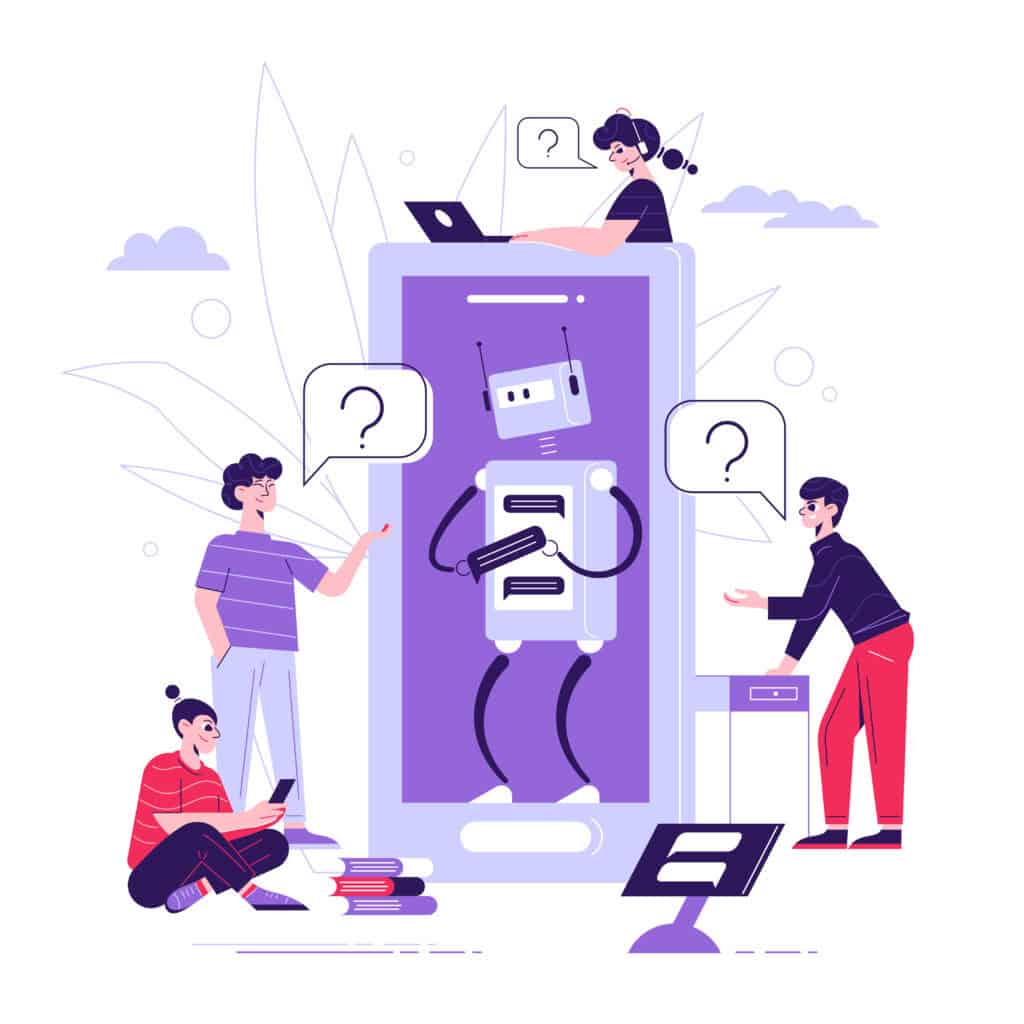
Now it’s time to zoom in on real-world performance.
In this part of the Claude vs GPT 4 discussion, we’ll look at how these models stack up when it comes to specific tasks.
Learning and Research
ChatGPT holds a major advantage in research with its Bing integration, which lets users access live, current information at the drop of a hat.
Whether it’s technical research, travel planning, product comparisons, or analyzing current events, the ability to get real-time data without breaking a sweat makes ChatGPT a strong contender here.
Claude, on the other hand, doesn’t have live internet access at the moment. It’s operating in a slightly more “what you bring is what you get” environment.
However, don’t count Claude out too fast. Thanks to its massive 200,000-token context window, Claude can digest huge volumes of documents and deliver deeply nuanced insights in one go — something ChatGPT might start losing track of over longer sessions.
In short, if you need the latest updates or to fact-check against the live web, ChatGPT’s your tool.
If you’re buried in PDFs and need an AI that can swim through them, Claude might be the better bet.
The Claude vs GPT 4 matchup here really depends on whether you’re chasing breaking news or mining static documents.
Writing and Content Creation
If you’re picking an AI for writing and content creation, Claude quietly steps forward with confidence.
Claude 3.5 Sonnet, in particular, produces output that feels remarkably human without needing a lot of hand-holding.
Compared to GPT-4o, Claude tends to avoid those overly polished, almost soulless phrases that scream “AI wrote this.”
Meanwhile, GPT-4o, even with all its improvements over the original GPT-4, still sometimes falls back into patterns like “in today’s ever-changing landscape” and “let’s dive in,” which can be dead giveaways in any decent writing room.
Claude’s “Styles” feature also makes it easy to switch gears. It has a style for peppy social media posts, formal internal memos, serious long-form journalism, and more.
ChatGPT has its own moves too. With Canvas, you can make real-time edits to documents, tweak the reading level, sprinkle in emojis, and reshape drafts with ease.
Then there’s DALL·E 3 baked right into ChatGPT for when you need AI-generated images, and Sora for generating videos. Claude lacks both capabilities.
Overall, if you’re just looking for pure, natural writing, Claude feels a little closer to human penmanship.
But if you’re managing broader creative projects that blend text, images, and videos, GPT-4o’s integrated toolkit gives it the upper hand.
The Claude 3 vs GPT 4 question for creatives boils down to: Do you want better writing, or a bigger creative toolkit?
Coding
Both Claude and ChatGPT have something to offer to coders.
Claude has the Artifacts feature, with which you get a real-time preview of what that code does, along with getting lines of code.
Whether it’s an interactive chart, a live document, or even a basic video game, you can test it, tweak it, and watch it update before your eyes with this feature.
Even as a beginner, you can ask Claude to turn some data into a working React component, tweak a CSS style here and there, or build mini-apps — all without feeling overwhelmed.
ChatGPT, on the other hand, can definitely code, but it’s a little less beginner-friendly unless you’re using its top-tier o1-mini model or working inside the Canvas environment.
GPT-4o’s capabilities are solid but not quite as intuitive out-of-the-box compared to Claude 3.5 Sonnet.
That said, if you’re an experienced developer, you’ll find that ChatGPT’s o1 model is a serious powerhouse for complex coding tasks, debugging, and architectural analysis.
Claude vs ChatGPT: Strengths and Weaknesses
By now, you’ve seen how these two AI giants duke it out across learning, creativity, and coding.
But when it comes down to pure strengths and weaknesses, the Claude AI vs GPT 4 debate gets even more interesting.
Ability to Handle Complex Prompts
ChatGPT delivers its best when you hand it a detailed prompt with specific instructions.
This knack for structured, technical outputs makes it a strong pick for tasks like summarization, technical writing, or anything where missing a step could spell disaster.
Claude, meanwhile, prefers a more free-range approach. It’s built for flowing conversations, brainstorming sessions, and storytelling.
You don’t have to write a meticulous prompt to get something valuable; just a gentle nudge in the right direction often leads to rich, human-sounding dialogue.
However, if you’re working on a highly technical, step-by-step task, Claude’s natural conversation style can sometimes drift a little.
In the Claude AI vs GPT 4 face-off for complex prompts, it’s basically: ChatGPT for structured, detail-driven work, Claude for creative, open-ended exploration.
Robotic vs Natural Language
Here’s where Claude absolutely flexes.
Compared to ChatGPT, Claude’s answers are concise, natural, and mercifully free from the AI clichés that sometimes plague ChatGPT.
ChatGPT is no slouch when it comes to info-dumping facts, but the delivery can sometimes feel robotic.
Of course, smart writers know how to make ChatGPT generate humanized text too.
Hallucination
Now, onto hallucinations, where AI just flat-out makes stuff up.
Claude’s weakness has always been its tendency to fabricate facts a little too confidently. Its Sonnet 3 model, for instance, had a staggering hallucination rate of 16.3%.
Thankfully, Claude 3.7 Sonnet brings that rate down to 4.4%, a major improvement, but still higher than what many fact-driven tasks demand.
Meanwhile, ChatGPT, especially in its latest 4o version, has become impressively grounded.
With a hallucination rate hovering around 1.5%, it’s way more reliable when you’re dealing with hard facts, legal references, technical manuals, or anything else.
Bottom line for Claude vs GPT 4: if you’re chasing creativity, Claude’s fine. If you’re chasing accuracy, ChatGPT’s your safest bet.
Web Search
Remember the times when you’d ask your AI about the latest news and it would sigh and mumble something about “knowledge cutoff in April 2024”? Yeah, that’s not really an issue anymore, at least if you’re using ChatGPT.
Thanks to its built-in web browsing feature, even the free plan lets you search live internet results. Want the newest iPhone rumors? ChatGPT will fetch them for you in a snap.
Plus, it even cites its sources so you can double-check its claims if you’re feeling suspicious.
Claude, for all its conversational polish, still doesn’t do live web searches. If you need up-to-the-minute info, you’ll have better luck with ChatGPT.
Voice Mode
With ChatGPT’s voice mode, you can speak to ChatGPT naturally, get answers instantly, and use it for all kinds of tasks like practicing languages or brainstorming ideas while you’re cooking dinner.
It even adapts to your level if you’re learning Spanish, Chinese, or any other supported language.
Claude doesn’t currently have a voice mode, which makes ChatGPT the clear favorite for accessibility.
Pricing Comparison
Both companies offer a range of plans designed to cater to different needs, whether you’re a casual user, a professional, or a business aiming to deploy AI at scale.
Here’s a clear look at Claude vs GPT 4 pricing options:
| Plan | Claude Pricing | ChatGPT Pricing |
| Free | Access Claude via web, iOS, and Android | Access GPT‑4o mini, limited GPT‑4o and deep research |
| Pro | $17/month (billed annually) | $20/month |
| Max (Claude) / Pro (ChatGPT) | $100/month (billed annually), with 5–20x Pro usage and priority access | $200/month (for high-capacity access) |
| Teams | $25/person/month (billed annually) | $25–$30/person/month |
| Enterprise | Custom pricing for large-scale needs | Custom pricing for large-scale needs |
| API Access | Pay-as-you-go model with scaling limits | Pay-as-you-go access through OpenAI’s platform |
Which AI Is Better for You?
Ultimately, the “better” is a subjective answer. It depends entirely on what you need from your virtual assistant.
The Claude vs GPT 4 debate comes down to your specific workflow and creative priorities.
If you want an AI partner that helps you brainstorm, code, write with natural flair, and even maintain consistent styles across different projects, Claude is a strong contender.
Claude’s Artifacts feature, which allows real-time code and document visualization.
Plus, Claude’s nuanced approach to complex analysis make it a natural fit for writers, developers, analysts, and creatives who demand sophistication in their tools.
On the other hand, if you’re looking for an all-purpose powerhouse, ChatGPT’s broader feature set is hard to beat.
Beyond generating text, it can create images, search the web in real-time, manage voice interactions, and even hook into specialized GPTs for niche tasks like legal research or academic writing.
Plus, ChatGPT’s fast response times give it an edge for both teams and individual users who want versatility.
Pro tip: No matter which AI assistant you choose to work with—or if you’re smart and decide to combine the strengths of multiple tools—your results can skyrocket when you pair them with powerful productivity boosters.
That’s where Undetectable AI comes in.
Enhance your workflow and save hours of time with our smart, easy-to-use tools:
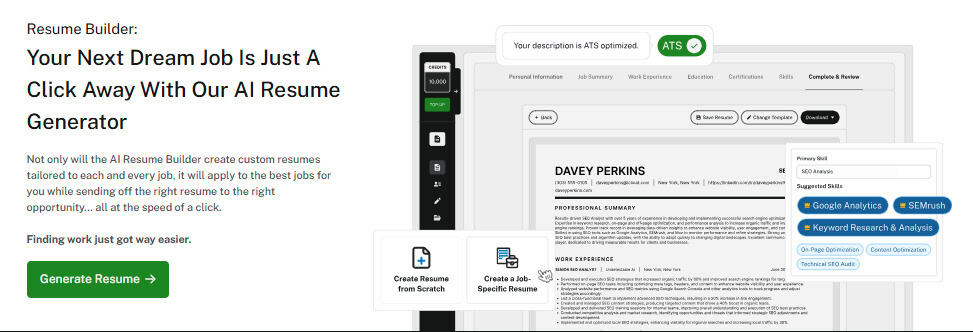

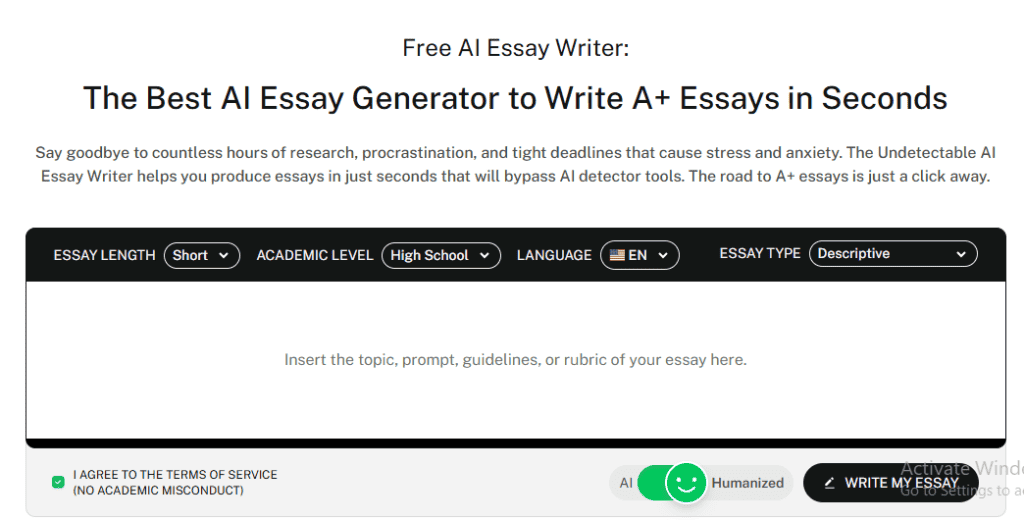
With these tools on your side, you can work smarter—not harder—and multiply your output without sacrificing quality.
Check out our AI Detector and Humanizer right in the widget below!
FAQs: Claude vs ChatGPT
Is Claude smarter than ChatGPT?
Not exactly. Claude and ChatGPT are good at different things. ChatGPT, especially GPT-4o, is generally better for precise technical tasks and fact-based queries.
Claude, on the other hand, shines in creative writing, nuanced conversations, and projects that need a more natural, human tone.
Can Claude do everything ChatGPT does?
No, Claude can’t do everything ChatGPT does.
While Claude is great for writing, brainstorming, and coding with its Artifacts feature, it doesn’t currently have live web browsing, image generation, or voice mode.
ChatGPT offers a wider range of capabilities, including real-time web search, image creation through DALL·E 3, and voice conversation features.
Which one is better for content creators?
Claude is often a better choice for content creators who value natural-sounding writing and easy style switching. Its outputs feel more human right out of the box.
However, ChatGPT is more versatile overall and offers additional tools like Canvas for editing and DALL·E for image generation, which can be incredibly useful for content teams working across multiple formats.
Ideally, many content creators find that using both together covers all their bases.
Final Verdict: Is Claude Better Than ChatGPT?
The Claude vs ChatGPT 4 debate isn’t a “winner takes all” kind of story.
Both are good at certain things.
Claude 3.5 Sonnet (and newer) models bring some serious firepower for anyone needing creative, expressive writing, thoughtful coding support, and deep-dive analytical conversations.
It feels more natural and less robotic, which, if you’re in the writing, coding, or creative fields, is a huge plus.
Meanwhile, ChatGPT 4o and its family of models offer a greater number of AI features: web browsing, voice chats, image generation, and document editing.
It’s a better pick if you need one AI to cover everything.
If you’re serious about maximizing your AI game, the best move might be using both.
And whatever AI you use, if you want your content to sound truly human and beat detection tools like a boss, you’ll want Undetectable AI on your side.
Our tools, like AI SEO Writer and Essay Writer tools transform your work into natural, undetectable text.
Ready to level up?
